Another Early Start for the BC Icewine Harvest
November 22, 2011 (Kelowna, BC) Mere days after completion of the BC grape harvest, the 2011 Icewine harvest began. Once again, this marks one of the earliest starts to the Icewine harvest in BC, with the first grapes being picked on November 19, second only to the November 5 harvest in 2003.
Icewine has been recognized as one of Canada’s signature wines ever since the first vintage at Hainle Vineyards in 1974. This year, twenty-six wineries expressed interest in picking the “liquid gold” for an expected 875 tons, the most tonnage ever projected for BC Icewine.
The first 2011 Icewine grapes were brought in by Summerhill Pyramid Organic Winery between 9:30 pm November 19 and 12:30 am November 20, as the temperatures hovered between -9°C (15.8°F) and -11°C (12.2°F). Winemaker Eric von Krosigk notes that they brought in a total of 5.5 tons of Riesling at 37 Brix and that there are still 17 acres of fruit awaiting the next cold snap, including Riesling, Chardonnay, Pinot Noir, Zweigelt, Syrah, and Merlot. General Manager Ezra Cipes stated that it was “great to get some berries off this early in the season, but we were worried about the temperature rising as the clouds rolled in, so we only got a small portion of our harvest off in this first round. The quality is excellent with vibrant acidity that will balance the sweetness and make for a most elegant finished wine.”
Thus far, only a handful of wineries have started their Icewine harvest, while the remainder wait for a prolonged, deep freeze that may not arrive until December or January.
To keep up-to-date on the harvest, follow @winebcdotcom, #BCHarvest2011 and #Icewine2011 on Twitter.
Photos available.
For further information:
Lindsay Kelm
Communications Manager
tel. 250-762-9744 ext. 103
cell. 250-317-8688
British Columbia Wine Institute
Suite 107 – 1726 Dolphin Avenue
Kelowna, B.C. V1Y 9R9
phone. 250-762-9744
toll free. 1-800-661-2294
fax. 250-762-9788
WINES OF MARKED QUALITY ICEWINE REGULATIONS
The Wines of Marked Quality regulations closely control the production of BC VQA Icewine. The key stipulations are that harvesting takes place at temperatures of -8˚C (17.6˚F) or lower, and the pressed grape juice is a minimum of 35 Brix. Artificial refrigeration of grapes, juice, must or wine is strictly prohibited. Counterfeit Icewine is an issue in other countries, particularly in Asia.
Producers must contact the BC Wine Authority to report the time harvesting begins, and to confirm prior reported tonnages and exact areas of vineyard left for Icewine production.
VITICULTURE
Harvest dates:Can be as early as November or as late as February. Producers track weather systems for early warnings of imminent cold weather.
Permitted varietals: All varietals are permitted. The most common are Riesling, Vidal, Ehrenfelser, Pinot Blanc, Pinot Noir, Merlot, Cabernet Franc,and Gewürztraminer, though Zweigelt, Maréchal Foch, Cabernet Sauvignon, Kerner, Lemberger, Oraniensteiner, Gamay Noir, Muscat and Merlot are all used as well.
Viticultural techniques:Most vineyards are netted against predators, particularly birds.
Harvesting method:Principally by hand. Usually takes place during the night or at dawn. However, in recent years with early November harvests, some BC Icewine producers have been able to pick during daylight hours.
Harvest temperatures:Although regulations state the temperature must be at least -8˚C (17.6˚F), producers often wait for -10˚C (14˚F) or lower before harvesting.
Frequency:The Okanagan and Similkameen Valleys are the only areas to regularly experience these cold climatic conditions in British Columbia. When temperatures do not fall enough for Icewine harvests, producers often make Late Harvest wines.
ICEWINE VINIFICATION
The following are general production techniques.
Pressing:The frozen grapes are brought as quickly as possible to the winery where they are pressed. One press cycle can last up to five or six hours.
Yields:Yields can range from 150 to 300 litres per ton (compared to approximately 600 litres per ton for dry table wines).
Fermentation:Temperatures generally range from 15 to 20˚C over a three- to 12-week period, depending on the Brix and strain of yeast. Fermentation is generally stopped using cold temperatures resulting in alcohol levels between 9 and 12 percent.
Acidification: Icewines can be acidified or deacidified.
Yeast:Icewine is inoculated, generally using strong fermenting yeast such as PDM.
Cold and heat stabilization: Icewines are stabilized before bottling.
Filtration: Generally using an earth and a pad filter, as membrane filters can easily clog.
Bottling: Generally within 6 to 9 months of the harvest.
Ageing potential:Icewines, particularly from Riesling, can age for over 10 years but are often preferred young and fresh.
About the BC Wine Institute (BCWI)
Since 1990, the BCWI has played a pivotal role in taking BC’s wine industry from a vision to an internationally recognized niche region producing premium wines and providing quality wine tourism experiences.
Representing 119 member wineries throughout the province, the BCWI supports and markets the Wines of British Columbia (BC VQA), which gives consumers assurance they are buying a wine that is 100% from BC. The BCWI also markets the Wine Regions of BC; delivers quality trade, media and consumer tastings; and acts as the voice of BC’s wine industry by advocating to government on behalf of its members.
About BC VQA
BC VQA = 100% BC Wine. BC VQA is an appellation of origin system that guarantees authenticity of origin and stipulates minimum quality standards for BC wines. Please visit winebc.com to learn more.







